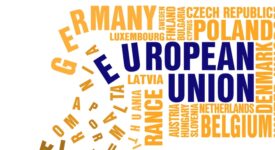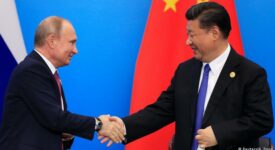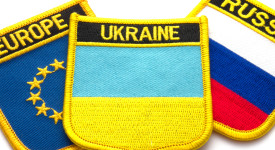The sea-lanes of communication connecting China to Europe through the Malacca-Suez route are one of the busiest in the world. Twenty-five percent of world trade passes through the Malacca Strait alone and China-Europe maritime trade is three times larger than trade by air freight. The State Oceanic Administration (SOA), which is the lead agency for policy development on the blue economy, defines the 21st century as “the century of oceans”. Its 2017 annual Ocean Development Report reported that China’s “marine GDP” represented 9.5 percent of its total GDP in 2016.
These numbers alone should convince Europeans to pay more attention to China’s activity at sea. But its ambitions are set to ramp up even further. This Maritime Silk Road represents the next phase of developing the country’s blue economy, rebranding existing maritime policies already promoted by the SOA and the National Development and Reform Commission (NDRC), directing investment towards key sectors and intensifying maritime trade. By doing so, their growth prospects rise exponentially from regional to global.
The Maritime Silk Road doesn’t only have an economical function, but it also represents naval power and international influence. In his work report to the 19th party congress, Mr. Xi Jinping, the Chinese president, stated that by 2050 China will have “become a global leader in terms of composite national strength and international influence” and maritime policies play an important role in this. After constitutional amendments adopted in February 2018, which have put an end to the two-term limit for China’s presidency, it is certain that Xi Jinping will stay in power beyond 2022 to make these ambitions a reality.
The Maritime Silk Road is indeed about power and influence. But Europeans should not overlook the importance of the blue economy for China, and they should not dismiss the Maritime Silk Road as mere propaganda. In fact, Chinese actions already affect European interests such as maritime trade or shipbuilding. China’s policies on facilitating the growth of its blue economy and its construction of a powerful navy are transforming the global maritime environment in which Europeans operate.
Both sides seek prosperity and security, and this can create opportunities. But overall the Maritime Silk Road presents Europe with serious challenges, and it will heighten the competition element in Europe-China relations. Europe should not turn its back on the opportunities that exist but it should not turn a blind eye to the challenges either. As a result, the EU and its member states should draw a clear line for themselves between investment that helps meet European long-term interests and investment that negatively affects Europe’s competitiveness.
Europe’s naval presence in the Indo-Pacific should focus on the defense of international law principles and on the promotion of peace in conflict resolution. Europe already exerts influence through the sale of naval equipment to Australia, Singapore, India, South Korea, and Malaysia, although economic interests are arguably a more important driver for these exports than strategic considerations. Europeans should view their presence and defense cooperation as a contribution to preserving peace in the Indo-Pacific region through achieving strategic balance.
Europe should emulate China’s strong and well-funded policies on developing shipbuilding, deep-sea exploration, offshore oil and gas exploration and exploitation, shipping, and on the availability of Chinese corporations and “policy” banks in supporting infrastructure projects worldwide. That said, Europeans should also keep in mind that a key Chinese weakness is the risk of public resources being wasted because of non-performing loans.
Europe will increasingly need to consider its approach to China as a matter of grand strategy, and not as a collection of specific policy responses around competition and cooperation with Beijing. Nothing has yet forced Europe to pick a side between China and a US-led counterbalancing coalition in the Indo-Pacific region. But the time will come when it will have to decide, and this may not be a time of Europe’s own choosing.
‘Blue China: Navigating the Maritime Silk Road to Europe’ – Policy Brief by Mathieu Duchâtel and Alexandre Sheldon Duplaix – European Council on Foreign Relations / ECFR.
(The Policy Brief can be downloaded here)







